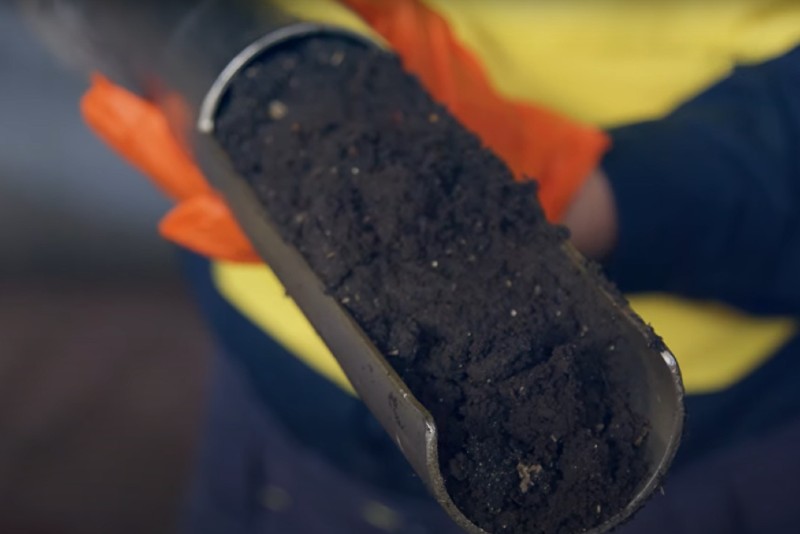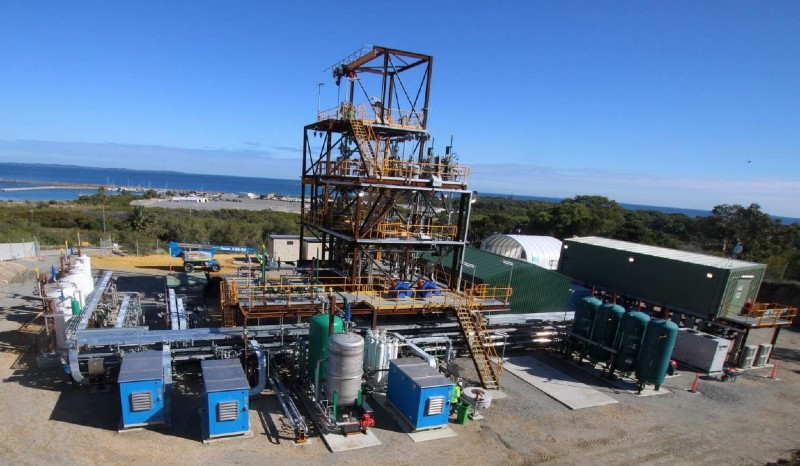There's no such thing as wastewater
What springs to mind when you think of recycling? Cardboard boxes, batteries, tin cans and light bulbs? Chances are, you weren’t thinking about wastewater. But we have! We have been testing the waters on wastewater recycling for years but more recently been looking at how to recycle excess biogas.
Wait, you’re talking about fart power?
We sure are. When solid matter in wastewater breaks down, methane or biogas is released. This combination of methane and carbon dioxide can be used as renewable fuel.
Where we can, we convert biogas into heat and energy to support our wastewater treatment plant processes. Biogas currently powers almost half of the electricity requirement of our Woodman Point Water Resource Recovery Facility.

Water Corporation employee showing what biosolids look like.
Leading the world
Over the past two years we have joined forces with Hazer Group. In a world first, the Hazer process will transform biogas into hydrogen and synthetic graphite with the help of an iron ore catalyst. These two products have many potential uses, including:
- Vehicle fuel
- Chemical feedstock
- Lithium-ion batteries
- Water purification
Our Head of Infrastructure Markets, Russell Lamb, said the project puts WA at the forefront of low emission hydrogen production.
“This project uses technology developed at the University of Western Australia, with a WA product in iron ore, and will be demonstrated at a WA water resource recovery facility. A great trifecta,” Mr Lamb explains.
Once commissioned, the Hazer Group Commercial Demonstration Plant will produce 100 metric tons of low-emission hydrogen each year. That’s enough to power around 15 buses for a year!

Hazer Commercial Demonstration Plant being constructed.
What is hydrogen energy?
Hydrogen is a versatile fuel produced from almost all energy sources. It can be a liquid or gas or combined with other materials. Importantly, hydrogen is also an energy carrier. This means it can store, move and deliver energy from other sources.
The global demand for hydrogen is increasing as sectors reliant on fossil fuels are transforming. In WA, renewable hydrogen will one day fertilise our crops, provide a chemical feed stock and fuel our shipping.
Net zero by 2035
We recently reaffirmed our commitment to a greener future. We have a net zero greenhouse gas target across all operations by 2035.
Hydrogen can be produced using renewable energy instead of fossil fuels, which release planet-warming greenhouse gases. This project shows how private and public enterprise can work together to reduce emissions and develop new industries.
"This a great advertisement for our state’s energy security and emissions reduction targets,” Mr Lamb says.
This is just one way we are increasing our resource recovery and de-carbonising our operations. Learn more about our other programs here.